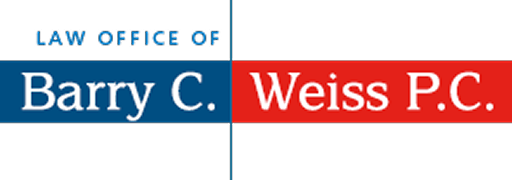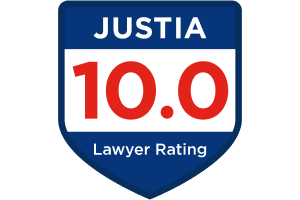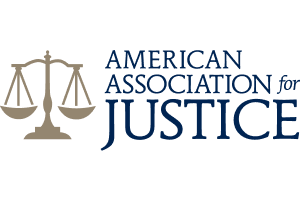212.785.1300
New York Criminal Lawyer
An arrest can be one of the most frightening and disorienting experiences a person will ever face. Whether it’s your first time encountering the justice system or not, the fear, confusion, and embarrassment can feel overwhelming. From the moment the handcuffs go on, your mind may race with questions about what happens next, what your rights are, and how this could affect your job, your family, or your future. This is not the time to try to figure things out on your own. You need someone who knows the process and can protect you from making mistakes that could cost you dearly. An experienced New York criminal lawyer can make the difference between panic and a clear path forward.
The criminal justice system in New York is fast-moving and full of procedures that are difficult to understand. You may feel isolated, unsure of who to trust, and afraid of what lies ahead. Each step, from the arrest to arraignment to trial, has rules that must be followed and deadlines that cannot be missed. The consequences of even a small mistake can be long-lasting, affecting your freedom, finances, and future opportunities. Having strong legal guidance is not a luxury. It is your best chance at a fair outcome. This is the time to rely on an experienced New York criminal lawyer to fight for your rights and your future.
What Happens After an Arrest in New York?
After a person is arrested in New York, the next steps happen quickly. The individual is first brought to a police precinct or to Central Booking for processing. During this time, the police take fingerprints, photographs, and personal information, and run a check for any outstanding warrants. The person is usually held in custody throughout this initial process and typically does not yet have access to an attorney. It is important to note that under N.Y. CPL § 140.10(1)(b), a police officer may arrest a person without a warrant if there is reasonable cause to believe that a crime has been committed. Reasonable cause is based on facts and circumstances that would lead a reasonable person to believe that the suspect committed an offense.
Once the arrest is processed, the case is referred to the district attorney’s office, where an assistant district attorney, often called the prosecutor, reviews the case and decides whether to file formal charges. If charges are brought, the individual must be arraigned before a judge, usually within 24 hours of the arrest. At the arraignment, the charges are read aloud, and the court determines the person’s status- whether they will be released, held on bail, or remanded (held in custody without bail).
It is important to understand that any statements made to the police can be used in court. Under N.Y. CPL § 60.45, a statement must be voluntary in order to be admissible. Even casual or informal remarks can be damaging if interpreted as an admission. Speaking with an experienced New York criminal lawyer as early as possible can help you avoid saying anything that may harm your defense.
If the arrest occurs outside of New York, extradition procedures apply. Before the person can be transported to New York, the state must obtain a governor’s warrant in accordance with N.Y. CPL § 570.08. However, the individual may choose to waive extradition, allowing for a faster transfer, as outlined in N.Y. CPL § 570.50. These interstate matters can be legally complicated. An experienced New York criminal lawyer can assist with the process, explain your options, and work to protect your rights at every stage.
What Is a Desk Appearance Ticket?
In some cases, particularly for lower-level offenses such as violations or certain misdemeanors, the police may issue a Desk Appearance Ticket (DAT) instead of holding the person in custody. A DAT is a written notice that instructs the individual to appear in criminal court on a future date to respond to the charges.
Receiving a DAT does not mean the charges are minor or should be taken lightly. It is still a criminal case, and failure to appear in court can result in a bench warrant being issued for your arrest under N.Y. CPL § 510.50. While a DAT allows the person to avoid overnight detention and speeds up release from the precinct, it still marks the beginning of a formal criminal prosecution. DATs are issued only when the offense is not bail-eligible and when the individual is unlikely to flee.
If you have received a Desk Appearance Ticket, it is important to consult with an experienced New York criminal lawyer as soon as possible. Your attorney can explain what to expect in court, begin preparing your defense, and take steps to protect your record and your rights.
What Happens at Arraignment?
The arraignment is the first formal court appearance. The judge reads the charges and asks the defendant to enter a plea, which is typically “not guilty” at this stage. The court then decides whether the person will be released, remanded, or required to post bail.
Under CPL § 510.30, the court considers several factors when determining bail:
- The seriousness of the charges
- Criminal history
- Ties to the community
- Risk of flight
After New York’s bail reforms, cash bail is no longer imposed for many non-violent misdemeanors and some non-violent felonies. Judges may release individuals on their own recognizance or impose conditions such as supervised release.
In felony cases, prosecutors must present the case to a grand jury within six days or demonstrate probable cause. If they do not, CPL § 180.80 allows for the defendant’s release from custody.
What Does the Grand Jury Do in a Felony Case?
For felonies in New York, the grand jury determines whether there is reasonable cause to believe that a felony was committed and that the accused committed it. This process is required unless the defendant waives the right.
During a grand jury proceeding, only the district attorney presents evidence. The defense is not allowed to be present, and there is no judge in the room. Defendants may testify if they notify the prosecutor under CPL § 190.50. However, this decision must be made carefully, as it carries risks.
The grand jury either returns an indictment or votes “no true bill.” An indictment leads to arraignment in a higher court, typically Supreme Court. If there is no indictment, the charges may be reduced or dismissed.
After the indictment is filed, the case proceeds to arraignment in Supreme Court. The defendant enters another plea, and bail may be reconsidered. At this stage, the defense can begin more extensive review of the prosecution’s evidence. The court also sets a schedule for motions, hearings, and trial preparation.
What Kinds of Pretrial Hearings Can the Defense Request?
After arraignment, the defense has the opportunity to file pretrial motions under N.Y. CPL Art. 255. These motions are formal legal requests asking the court to make rulings on specific issues before trial. The goal is often to challenge the way evidence was obtained, limit what the prosecutor can present to the jury, or in some cases, seek dismissal of the charges altogether.
When the court grants a motion for a hearing, it sets a date for both sides to present arguments and, if necessary, witness testimony. These pretrial hearings play a significant role in shaping the course of a case. If the judge decides that certain evidence was obtained unlawfully or in violation of the defendant’s rights, that evidence may be excluded from trial. This can weaken the prosecution’s case and lead to a more favorable resolution for the defense, including a reduced charge, dismissal, or better plea offer.
Several types of hearings are commonly requested in New York criminal cases:
- Huntley Hearing. This hearing addresses the admissibility of statements made by the defendant. In People v. Huntley, 15 N.Y.2d 72 (1965), the Court of Appeals held that the prosecution must prove that a defendant’s confession was voluntary. Coerced or improperly obtained statements are inadmissible.
- Mapp Hearing. A Mapp hearing examines whether physical evidence was seized unlawfully. In Mapp v. Ohio, 367 U.S. 643 (1961), the United States Supreme Court held that evidence obtained in violation of the Fourth Amendment must be excluded from use at trial. This case set the precedent for applying the exclusionary rule to state courts, not just federal proceedings. The rule requires suppression of evidence gathered through illegal searches and seizures. A Mapp hearing typically involves issues such as warrantless searches, searches that exceed the scope of a valid warrant, or evidence obtained without probable cause.
- Dunaway Hearing. This hearing focuses on whether the defendant was unlawfully detained before being questioned by police. In Dunaway v. New York, 442 U.S. 200 (1979), the United States Supreme Court held that even if Miranda warnings are given, a confession must be suppressed if it was obtained following an illegal detention without probable cause. Miranda warnings refer to the rights that must be read to a person in police custody before questioning begins. These include the right to remain silent, the right to an attorney, and the warning that anything said can be used against the person in court. The Court in Dunaway made clear that giving Miranda warnings does not cure the illegality of a detention that lacked proper legal justification. A Dunaway hearing allows the court to examine whether the initial detention violated the Fourth Amendment, and if so, whether any resulting statements should be excluded from evidence.
- Wade Hearing. This hearing examines whether an identification procedure, such as a lineup, show-up, or photo array, was conducted in a way that was unfair or overly suggestive. In United States v. Wade, 388 U.S. 218 (1967), the United States Supreme Court held that post-indictment lineups are a critical stage of the prosecution, and that the defendant has a right to have counsel present during these procedures. The Court also emphasized that identification methods must not be so suggestive that they create a substantial likelihood of misidentification. If the procedure is found to be flawed or if the defendant was denied the right to counsel during a lineup, the identification may be suppressed. A Wade hearing allows the court to determine whether the identification process violated the defendant’s rights and whether the resulting evidence should be excluded from trial.
How Do Plea Bargains Work?
Most criminal cases in New York do not go to trial. Instead, they are resolved through plea negotiations. A plea bargain can result in reduced charges or a more lenient sentence. Prosecutors may offer:
- Reduced charges (e.g., felony to misdemeanor)
- Shorter sentences
- Treatment alternatives, such as drug court
For certain cases, particularly low-level misdemeanors, an Adjournment in Contemplation of Dismissal (ACD) may be available. Under CPL § 170.55, an ACD allows the case to be dismissed and sealed after six months or one year, if the person stays arrest-free.
Before accepting a plea, a defendant should understand all legal consequences. This includes effects on immigration, professional licensing, and future employment. Once a plea is entered, the right to trial and most appeal rights are waived.
What Happens at a Criminal Trial?
If a plea agreement is not reached, the case proceeds to trial. In New York, a defendant charged with a misdemeanor has the right to a bench trial before a judge or a jury trial composed of six jurors, as provided in N.Y. CPL § 340.40(2). For felony charges, the defendant is entitled to a jury trial with twelve jurors under N.Y. CPL § 270.05. The defendant also has the right to waive a jury and request a bench trial, though this is less common in felony cases. This waiver must be made knowingly and voluntarily, and it must be approved by the court, as outlined in N.Y. CPL § 320.10(2).
At trial, the burden is entirely on the prosecution, which must prove the defendant’s guilt beyond a reasonable doubt. This is the highest standard of proof in the legal system. It means that the jury must be firmly convinced of the defendant’s guilt based solely on the evidence presented. If there is a reasonable explanation of the facts that supports innocence, the jury is instructed to find the defendant not guilty.
A criminal trial generally follows this sequence:
- Jury selection (voir dire): Potential jurors are questioned by the court and attorneys to ensure they can be fair and impartial.
- Opening statements: Each side presents an overview of the case to the jury, outlining what they intend to prove.
- Prosecution’s case: The prosecutor presents evidence first, including physical evidence and testimony from witnesses such as police officers, experts, or victims.
- Cross-examination: The defense has the opportunity to question the prosecution’s witnesses to test the reliability and credibility of their testimony.
- Defense case: The defense may present evidence and call witnesses, but is not required to. A defendant has the right to remain silent and is not obligated to testify.
- Rebuttal evidence: The prosecution may introduce limited evidence to counter the defense’s case.
- Closing arguments: Both sides summarize their arguments, highlight key evidence, and try to persuade the jury of their position.
- Jury instructions: The judge provides the jury with the legal standards they must follow when deliberating.
- Deliberation and verdict: The jury privately discusses the case and must reach a unanimous decision in order to convict or acquit.
If the jury finds the defendant guilty, the case proceeds to sentencing. If the jury finds the defendant not guilty, the case is dismissed, and the defendant is released. If the jury cannot reach a unanimous verdict, the judge may declare a mistrial, and the prosecution may decide whether to retry the case or dismiss the charges.
A criminal trial is a structured and complex process with high stakes. Having an experienced New York criminal lawyer who understands how to challenge evidence, present a strong defense, and advocate effectively before a judge and jury is critical at every stage.
What Are the Sentencing Options?
Sentencing occurs after a conviction at trial or a guilty plea. The judge considers many factors before imposing a sentence, including the seriousness of the offense, the defendant’s criminal history, the harm caused to any victims, and any mitigating or aggravating circumstances. The sentencing structure is governed by the New York Penal Law and varies based on the classification of the offense.
Under N.Y. Penal Law §§ 70.00–70.15:
- A Class A felony may result in a life sentence.
- A Class B felony can carry a determinate sentence of up to 25 years.
- A Class D or E felony may carry shorter prison terms, including indeterminate sentences with parole eligibility.
- A Class A misdemeanor is punishable by up to 364 days in jail.
- A Class B misdemeanor carries a maximum of 3 months in jail.
- Violations are not crimes and may result in a fine, community service, or a conditional discharge.
Judges may also impose alternatives to incarceration, such as probation, drug or mental health treatment, or community service. In People v. Farrar, 52 N.Y.2d 302 (1981), the Court of Appeals affirmed that sentencing discretion lies with the judge, provided the sentence is lawful and appropriate to the facts of the case.
How Do You Appeal a Criminal Conviction?
After a conviction, the defendant may file a direct appeal. This process reviews legal errors made during the trial or sentencing. The appeal must begin with a Notice of Appeal filed within 30 days of sentencing.
Errors that can be reviewed include:
- Incorrect jury instructions
- Improperly admitted or excluded evidence
- Misconduct by the prosecution
In People v. LaFontaine, 92 N.Y.2d 470 (1998), the Court of Appeals reversed a conviction because the trial court failed to consider a motion that could have changed the outcome. The decision shows that procedural errors must be addressed promptly.
If you believe your conviction was the result of legal mistakes, it is important to act quickly. Missing a filing deadline or failing to raise the right issues can prevent you from getting your case reviewed. Contact an experienced criminal attorney in New York to discuss your appellate options and protect your rights.
Frequently Asked Questions
A. It varies. Misdemeanor cases may resolve within a few months, while felony cases can take a year or longer, especially if the case goes to trial.
A. It’s a pretrial proceeding where the defense can ask the judge to exclude evidence that was obtained illegally, such as through an unlawful search or seizure.
A. Many convictions do remain on your record, but certain offenses may be eligible for sealing under New York law. See CPL § 160.59. A criminal attorney can assess your eligibility.
A. Yes. In New York, the decision to prosecute lies with the District Attorney’s Office, not the victim. The prosecutor can proceed even without the victim’s cooperation.
A. Missing a court date can lead to a bench warrant for your arrest. It’s important to contact your attorney or the court immediately to explain the situation and try to reschedule.
A. Possibly. Arrests and court appearances may become public record, and some employers conduct background checks. A lawyer can advise on how to limit the impact on your job.
A. You may be restricted from leaving the state or country while on bail or pretrial release. Always ask your attorney and get court permission if travel is required.
A. You can request your RAP sheet (criminal history) from the New York State Division of Criminal Justice Services. Your attorney can also obtain and review it for accuracy.
Contact the Law Offices of Barry C. Weiss, P.C.
Navigating the criminal justice system is difficult. From the moment of arrest to the final resolution of your case, each step involves legal procedures that can significantly affect the outcome. If you have been accused of a crime, it is important to speak with a qualified criminal attorney serving New York as soon as possible.
The team at the Law Offices of Barry C. Weiss, P.C. has years of experience representing clients charged with serious offenses, including assault, grand larceny, sexual assault, domestic violence, drug crimes, firearm offenses, and other felonies and misdemeanors. We understand what is at stake and are committed to protecting your rights at every stage of the process.
To schedule a free, no-obligation consultation, contact us at 212.785.1300. We represent clients throughout New York City and the surrounding areas, including the Bronx, Brooklyn, Manhattan, Queens, Staten Island, Nassau County, Suffolk County, and Westchester County.














